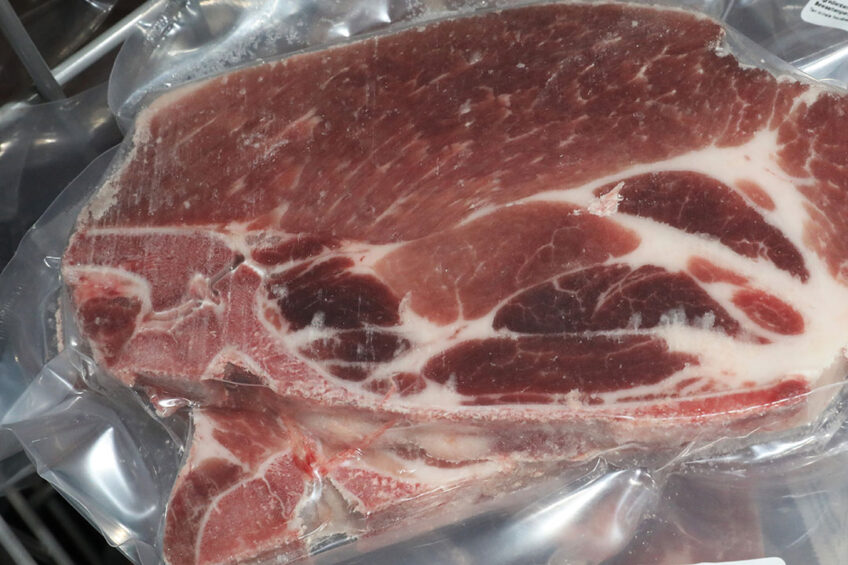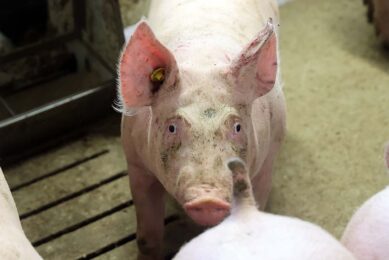Will the UK import more pork from the US?

The UK continues to import pork from the EU, US and other regions, and the US pork industry would like to increase its share of that market.
Recently, Courtney Knupp, vice president of international market development at the National Pork Board, traveled to the United Kingdom with a Michigan pig farmer to participate in a US Department of Agriculture (USDA) trade mission that spanned several different commodities. They gathered feedback to refine US pork’s sustainability messaging, a key demand among consumers in the UK and other markets.
They also visited retailers, including Costco. The pork loins at all 30 UK Costco locations are imported from the US, according to the Board.
UK is a significant importer
In terms of the overall market, “the UK is a significant importer of pork, almost entirely from the EU,” notes Joe Schuele, director of communications at the US Meat Export Federation (USMEF). “Demand is greatest for boneless loins and hams, of which the US is a very price-competitive producer.”
It is crucial for our own pig industry that any imports are produced to the same high standards required by domestic legislation and that consumers expect from British pork
Charlie Dewhirst, senior policy adviser at the National Pig Association
High standards
Charlie Dewhirst, senior policy adviser at the National Pig Association (NPA) of the UK, explains that “as the UK is not self-sufficient in pork production, we need to import significant volumes to meet demand. However, it is crucial for our own pig industry that any imports are produced to the same high standards required by domestic legislation and that consumers expect from British pork.”
Very little pork is exported from Canada to the UK. “Last year we shipped 36,700 kg worth $ 606,395 CAD,” reports Gary Stordy of the Canadian Pork Council.
A look at UK imports – and exports
During May 2022, the UK’s total pork imports totaled $ 1.044 billion USD, up 26% from a year ago, says Schuele. “Volume totaled nearly 300,000 mt, up 30%, as obstacles resulting from Brexit and Covid eased and imports from the EU regained momentum,” he reports. UK exports of pork were also up, 11% to 163,000 mt, to the EU.
“Thus, the EU is a significant net importer [to the UK] but it relies on exports for carcass balance,” says Schuele. “This includes exports of picnics and trimmings to the EU and variety meat exports to China. Other top destinations for UK pork include the Philippines, the US, Australia, South Africa and Canada.”
If the US and UK had a deal that eliminates tariffs and reduces sanitary barriers, US pork would have an opportunity to build inroads with UK further processors, foodservice operators, and eventually, retailers
Joe Schuele, director of communications at the US Meat Export Federation
Unfair duties?
US pork exports to the UK, Schuele explains, are hampered by in-quota duties, which vary by product.
“For example, the largest quota volume available is for boneless loins and hams, at a duty rate of 2.09 £/kg,” he says. “This is a huge disadvantage compared to imports from the EU, which enter at zero duty and are not subject to any quotas. In addition, US pork exports to the UK must still be from EU-approved plants and must meet all the requirements outlined in the ‘Pork for the EU Program’ administered by USDA.”
Trade agreement
A solution to this situation, says Schuele, is a trade agreement. If the US and UK had a deal that eliminates tariffs and reduces sanitary barriers, he says “US pork would have an opportunity to build inroads with UK further processors, foodservice operators, and eventually, retailers.”
UK industry crisis
Looking at UK pork production, on August 3, the NPA stated that “worrying new data” from an independent analysis “suggests the UK pig supply chain is facing a significant shortage of pork, as herd and sow numbers plummet following 18 months of crisis for the pig sector.
Back in May, NPA sent a letter to UK supermarket chain Tesco, asking for support “as 4 out of 5 British pig farmers are set to go bust.”
Unprecedented losses
The release at that time stated that “UK pork producers are currently facing unprecedented losses as costs of production soar due to record pig feed prices…It currently costs an estimated 203-216 pence per kg to produce a pig, a figure forecast to rise even higher as wheat prices continue to rise due to disruption caused by the war in Ukraine.”
 Beheer
Beheer








 WP Admin
WP Admin  Bewerk bericht
Bewerk bericht